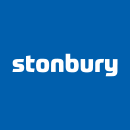Wave Wall Investigation
Stonbury was contracted to complete investigation works into the condition of an existing wave wall structure on an impounding reservoir.
These works were undertaken as part of a long-term strategy due to the early signs of degradation from long term exposure and erosion from wave action. The investigation scope included the removal and repair of two sections of degraded wave wall, core sampling with detailed analytical analysis and non-destructive investigations.
The wave wall consists of pre-cast panels to the water side, with a dry-stone wall set into the concrete on the side facing the road; although historic drawings were unclear on how these interacted, so this formed part of the investigation.
After the two areas were segregated from the public and scaffolding was erected to provide safe access to the work area and means of rescue, the existing stone wall was dismantled. To ensure that it was possible to rebuild the wall to its original integrity, the stone blocks were numbered and carefully reapplied in the same order during the rebuilding.
Once exposed, the concrete was cut and removed with 300mm clearance to either side of two identified construction joints, as instructed by external engineers who were overseeing the investigation works. Stonbury completed several non-intrusive surveys including ferro scanning, crack assessments and condition surveys.
Multiple cores of varying depths were drilled from the removed sections in the locations specified in a report provided by the client and were sent for detailed analytical sample analysis. Following completion of the investigations, the wall sections were reinstated to match the existing build detail. The wall is now repaired, and we are awaiting results from the extensive concrete analysis.
In addition to the works to the wave wall, Stonbury was also contracted to assess and clean old coatings from inside of the bell mouth using high-pressure jet washing to make a more detailed assessment of what condition the bell mouth remained in. This was also put under an inundation test to check whether water was getting behind the structure.
Following completion of the above intrusive works both structures were 3D scanned along with an access tunnel adjacent to our work area, and topographical surveys were completed. These should give the design engineers and our client all the information needed to provide a long-term sustainable solution for the site.

